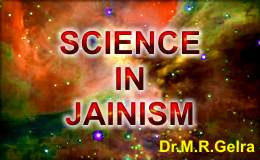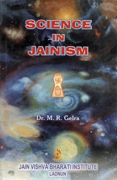
Parmanu
Parmanu is the smallest part of the pudgala but it is different from the term atom. Bhagwati Sutra describes at various levels the diverse attributes of parmanu, regarding tactility; each parmanu has two kinds of tactility. It will be either cold or hot and oily or dry. By permutation and combination four types of parmanus are possible. Parmanu may be cold and oily (snigdha) or cold and dry (ruksha) or hot and snigdha or hot and ruksha. It shows that these are four original kinds of tactility of pudgala.
Skandha (molecule) is an individual aggregate formed by the combination of parmanus. Two parmanus may combine and form dvipradeshi skandh. Pradesh means a parmanu in union with the skandh. More parmanus or skandh may combine to form countable, uncountable or infinite pradeshi skandhs.
The most remarkable contribution of the Jains to the atomic theory relates to their analysis of atomic linking or the mutual attraction or repulsion of parmanus to form skandhs (molecules). Such combinations bring about new qualities in Skandh. Mass is one of them. Mass is not the fundamental property of the parmanu. The two traditions of Jains, Swetamber and Digamber hold different view regarding the laws of combination.
Skandh may form in two ways:
- Sadrashya parmanus i.e. parmanus of similar tactility.
- Visadrashya parmanus i.e. parmanus of opposite tactility. (Snigdha parmanus combining with ruksha parmanus).
Swetamber tradition holds that:
- In sadrashya parmanu combination first there should be a minimum difference of two-unit intensity and secondly either of the, parmanus should not be of one unit intensity only i.e. of jaghanya guna (minimum degree of attribute).
- In Visadrashya parmanu combination it is not necessary that there should be a minimum difference of two-unit intensity as required in sadrashya parmanu combination. Further, both the parmanus should not be of one unit intensity only i.e. of Jaghanya guna. In the rest of the cases, combination does take place. Digamber tradition holds the view that the combinations in sadrashya and visadrashya parmanus follow the same rule. The combination can take place only when there is a minimum difference of two-unit intensity. Otherwise no combination can take place.
According to the Jains, parmanus combining to form skandh (molecule) may exist mainly in two forms: sthula (gross) and sukshma (fine).
The discussion of the sukshma pudgala is interesting and illuminating. It is of two types.
- Chatusfarshi pudgala i.e. with four attributes of tactility.
- Asthfarshi pudgala i.e. with eight attributes of tactility.
Chatusfarshi pudgalas have cold, hot, oily and dry tactility. These pudgalas have no mass. The large increase in oily tactility during combination causes the evolution of mass. The large increase in dry tactility makes the pudgala lighter. The other tactilities are responsible for the evolution of other properties of the molecule. The large increase in cold and oily tactility brings about softness in the pudgalas whereas increase in hot and dry tactility brings about hardness in the molecule.
 Dr. Mahavir Raj Gelra
Dr. Mahavir Raj Gelra

